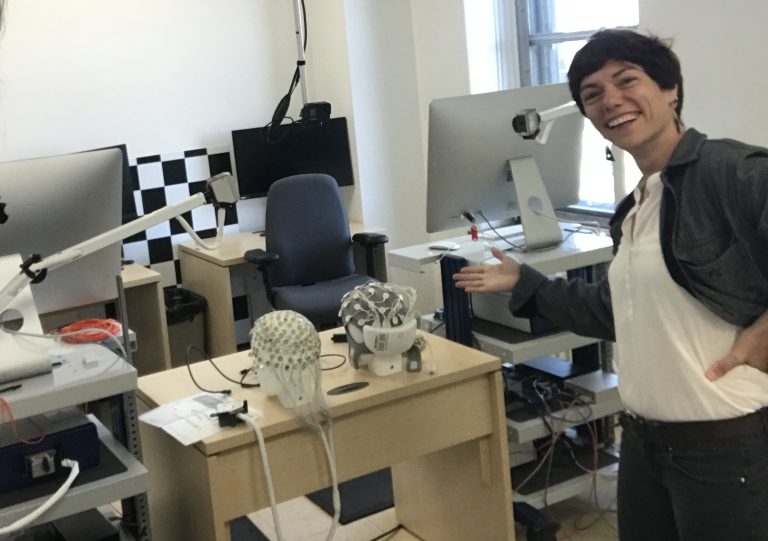Friday, 31 October 2025
A visit to a hyperscanning laboratory

Last September, thanks to doctoral student Anne Monnier, I had the chance to visit the laboratory where she is doing her research, directed by Guillaume Dumas at the CHU Ste-Justine research centre in Montreal. I have written about Dumas in an earlier post in this blog, in which I described the hyperscanning technique being used for several research projects at this “precision psychiatry and social physiology” laboratory.
As I explained in that post, hyperscanning consists in observing in real time what is going on between the brains of two people who are interacting socially. Often, the methods used in hyperscanning, such as functional magnetic resonance imaging, or, even better, electroencephalography, which affords greater temporal resolution, show correlations between the activities of certain parts of the two individuals’ brains. In other words, they show synchronization of neural activity–bursts of activity at the same frequency and in phase with each other, and not just among various regions of a single brain, as in virtually any cognitive task, but rather between two different brains.
As you can see in the above photo, in the experimental set-up for hyperscanning, there are two copies of every piece of equipment, so that researchers can simultaneously record the activity of two brains that are interacting, as is the case in the vast majority of social interactions between humans. In this way, for some 20 years now, researchers have been studying how an individual’s brain activity is influenced by their interactions with other people and how that individual’s behavioural and verbal reactions influence those other people’s brains in turn. One classic experimental protocol would be to have two individuals engage in a simple task of imitation, trading the roles of initiator and imitator over the course of the experiment. This protocol lets researchers explore what is going on in the brains of two individuals, whether they are neuronormal or somewhere on the autism spectrum, as is one of the populations studied in the Dumas lab.
To find out more about the ABCs of hyperscanning, you can read this article suggested to me by Anne Monnier, whom I want to thank here for all her help. Published in 2020, it presents the methods used and results obtained over the past 20 years of hyperscanning research.
From Thought to Language, Mental Disorders | Comments Closed








